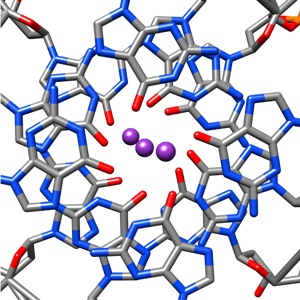GENETICS: THE FUTURE OF MEDICINE
With studies into genetics and breakthroughs in scientific research, the field of gene therapy is growing exponentially. We expect this research will continue to improve the lives of people with previously uncurable diseases. Cancer to debilitating genetic conditions, the solution to a cure could lie in the our own DNA and genetic makeup. From gene repair to gene replacements; gene therapy and biopharma advancements are making huge strides in the medical field.
Some of the new products being formulated:

Rheology plays an important role in the current formulation process for oligonucleotides. Oligonucleotides are released through a process called cell lysis. With intact cells, the viscosity of the oligonucleotides can be too high for downstream processes.

Higher concentrations means higher viscosity which make injectability more difficult. During the formulation process, you should monitor the viscosity of injectables so that you know you have a truly viable candidate. Injectability studies require high shear rate capabilities.

Current ADC formulation efforts are focused on increasing cytotoxic payload and this can be achieved by increasing concentration of mABs in the formulation. Both of these changes require viscosity monitoring during formulation.
- Oligonucleotides
- Lipid Nanoparticles
- Antibody-Drug Conjugates
Oligonucleotides are synthetic DNA or RNA molecules made up of a small amount of nucleotides (usually 3 up to 25) and designed to hybridize with DNA or RNA sequences. Oligonucleotides are used to modulate gene expression and can be used to target specific RNA degradation. This allows them to be used to inactivate genes in a specific disease process. Current formulation efforts are focused on improving cellular targeting and uptake capacity of oligonucleotides.
Rheology plays an important role in the current formulation process for oligonucleotides. Oligonucleotides are released through a process called cell lysis. With intact cells, the viscosity of the oligonucleotides can be too high for downstream processes. So, enzymes or bacteria are added to hydrolyze and speed up the lower concentration lysate formation. Keeping track of viscosity during the lysate formulation is extremely important. Since these formulations are expensive and measurements must be achieved with high accuracy and repeatability, the low sample volume requirements of the RheoSense line of viscometer is extremely helpful. With sample retrieval and recovery features of the m-VROC II and Initium one plus, you can gather unlimited amounts of data with a single 15 microliter sample saving you time and money.
Lipid Nanoparticles (or LNPs) are spherical vesicles made of ionizable lipids that are used as vectors for drug delivery and gene therapy. Commonly known for their recent use as an mRNA vaccine (Covid-19 vaccine). Due to their specific type of lipid coating, at low pH, they are positively charged which enables RNA complexion. They are neutrally charged at our body’s natural pH which reduces potential toxic effects when injected into the body. Toxicity was known to be an issue associated with positively charged lipid vectors called liposomes which have been used in the past for various gene therapy treatments.
mRNA delivery into the body can be problematic because the mRNA strands are too large to diffuse into the cell. Scientists found that using a vector, or carrier vessel, to deliver the mRNA to the cell made a significant impact. The vector helps to pass into the cytoplasm of the host cell where it can activate the appropriate genes and begin to replicate.
LNPs must be injected into the body. A higher concentration of LNPs would normally be ideal for each injection to lessen the amount of injections needed for each treatment. Higher concentrations mean higher viscosity which makes injecting the solution more difficult. During the formulation process, monitoring the viscosity of injectables can help determine early which candidates are viable and should continue in the process. Testing injectability and injection force requires the capability to test viscosity changes in a high shear environment. RheoSense viscometers employ fully-enclosed flow channels and variable rate pumps which allow for high-shear testing without the concern for expelling the sample or altering viscosity due to liquid-air interface.
Antibody-drug conjugates (ADCs) are a group of gene therapy drugs developed as a targeted cancer treatment. A cytotoxic drug is delivered by a monoclonal antibody (mAB) that targets a specific protein found in the offending tumor cells. Once delivered, the cytotoxin can destroy the cancer cells and avoid contact with healthy cells.
Current ADC formulation efforts are focused on increasing cytotoxic payload by increasing concentration of mABs in the formulation. Both of these changes require viscosity monitoring during formulation to ensure that they will be deliverable when completed. With the high precision and high accuracy of the RheoSense line of viscometers, you are able to perform intrinsic viscosity studies and gather a better understanding of agglomerative or dispersive effects.
Why RheoSense?
RheoSense viscometers use proprietary VROC™ technology to take the most accurate and repeatable measurements from the smallest sample sizes possible.
In addition, the automated initium one plus viscometer can measure a 96 well plate of samples as small as 19 uL in less than 24 hours.



